Abstract
The susceptibilities of 462 clinical anaerobic bacterial isolates to N-formimidoyl thienamycin and 16 other currently available and investigational antibiotics were determined by the agar dilution technique. N-Formimidoyl thienamycin was significantly more active than the reference antibiotics against most organisms tested, especially Bacteroides sp., including clindamycin-resistant strains. All 462 isolates were inhibited by 4 micrograms of N-formimidoyl thienamycin per ml, and no resistant strains were found in the species tested. N-Formimidoyl thienamycin was less active (i.e., had a higher 50% minimal inhibitory concentration) against Fusobacterium sp. than clindamycin, SM-1652, and piperacillin, and less active against Clostridium difficile than metronidazole, but was equally active or more active than the other reference antibiotics tested.
Full text
PDF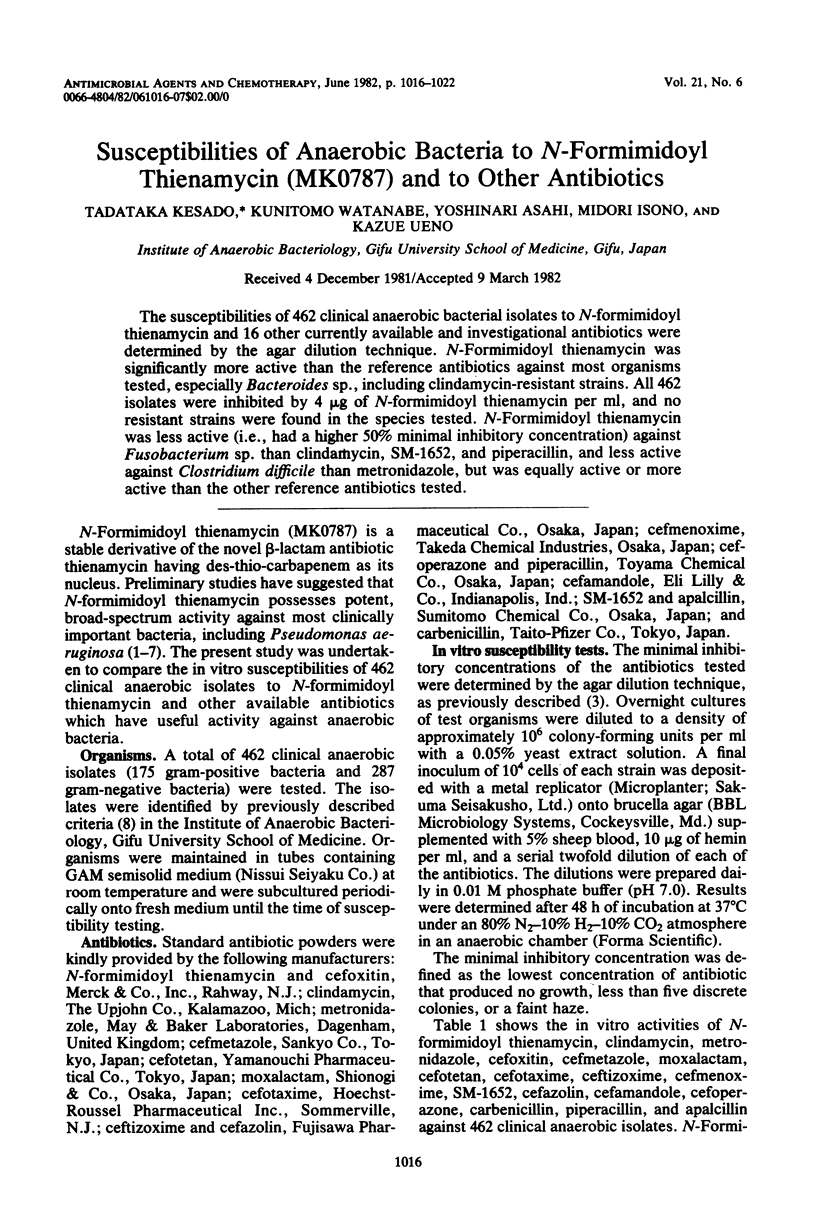
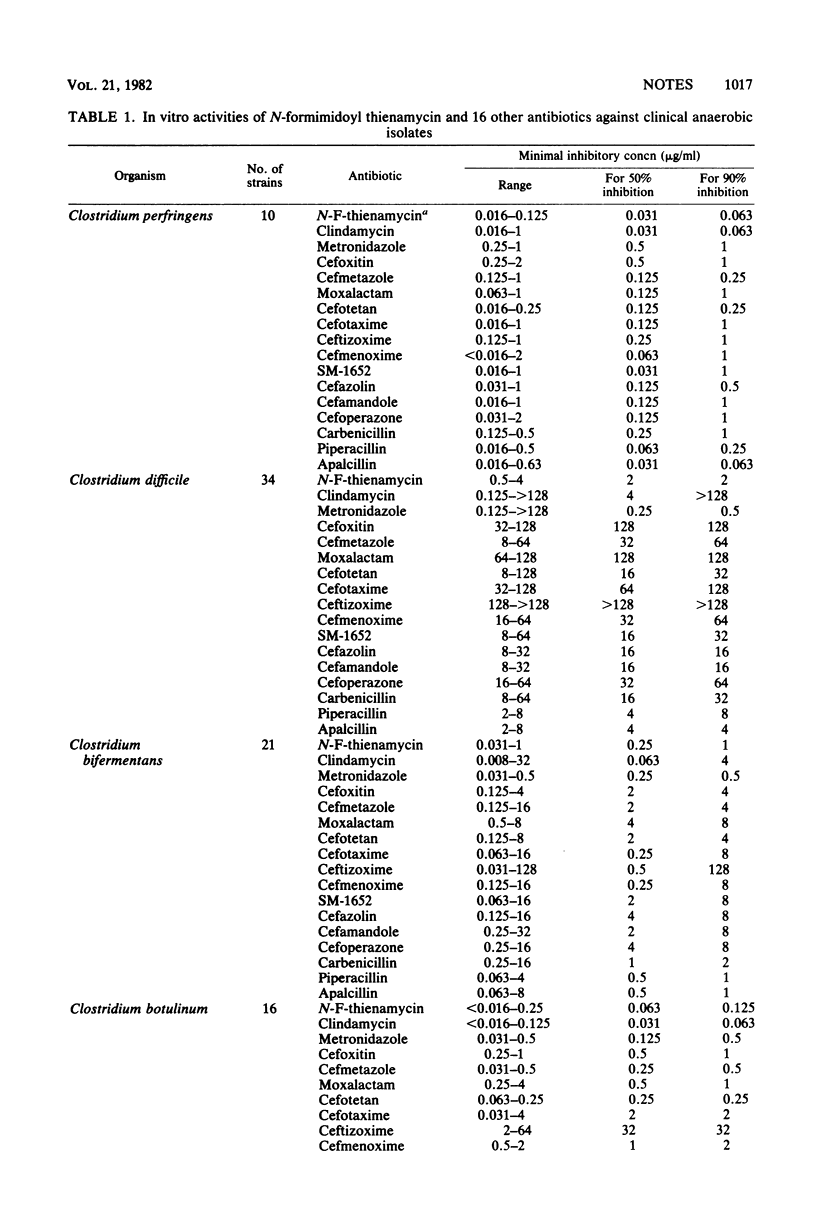
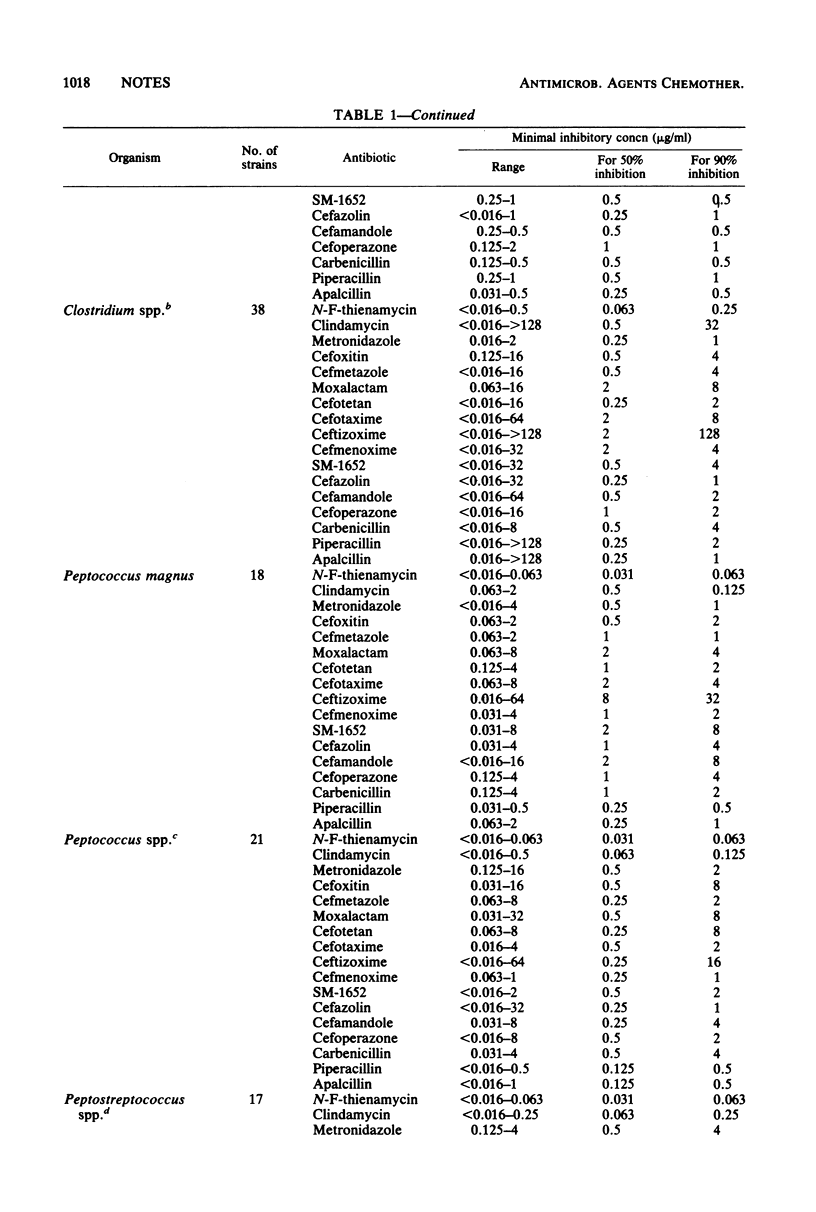
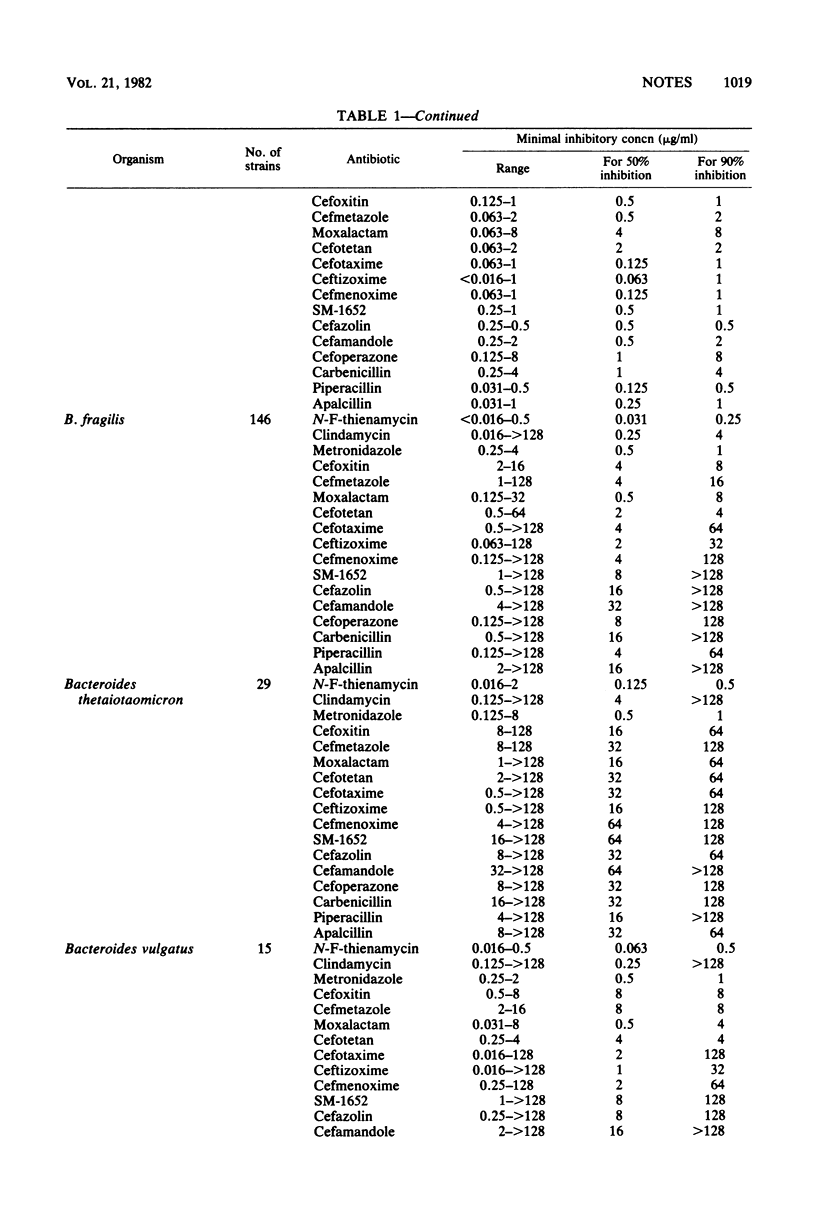
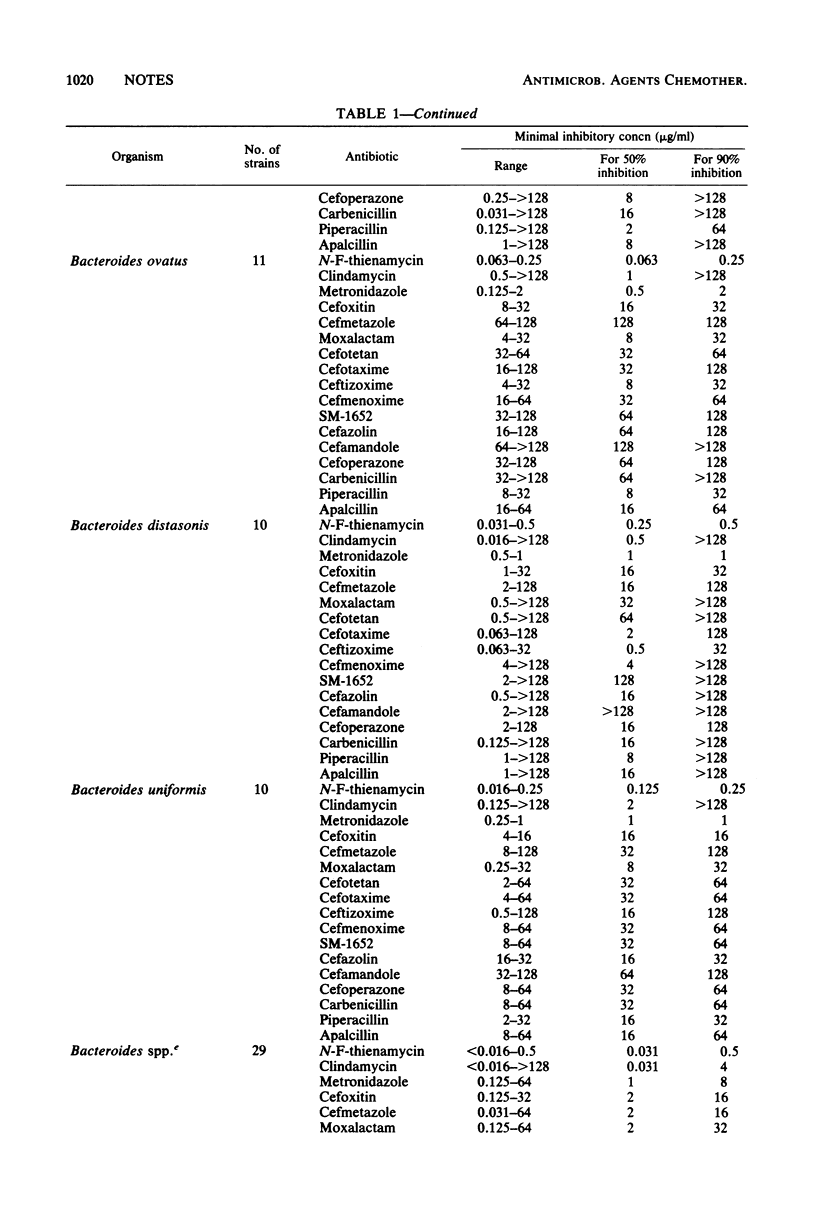
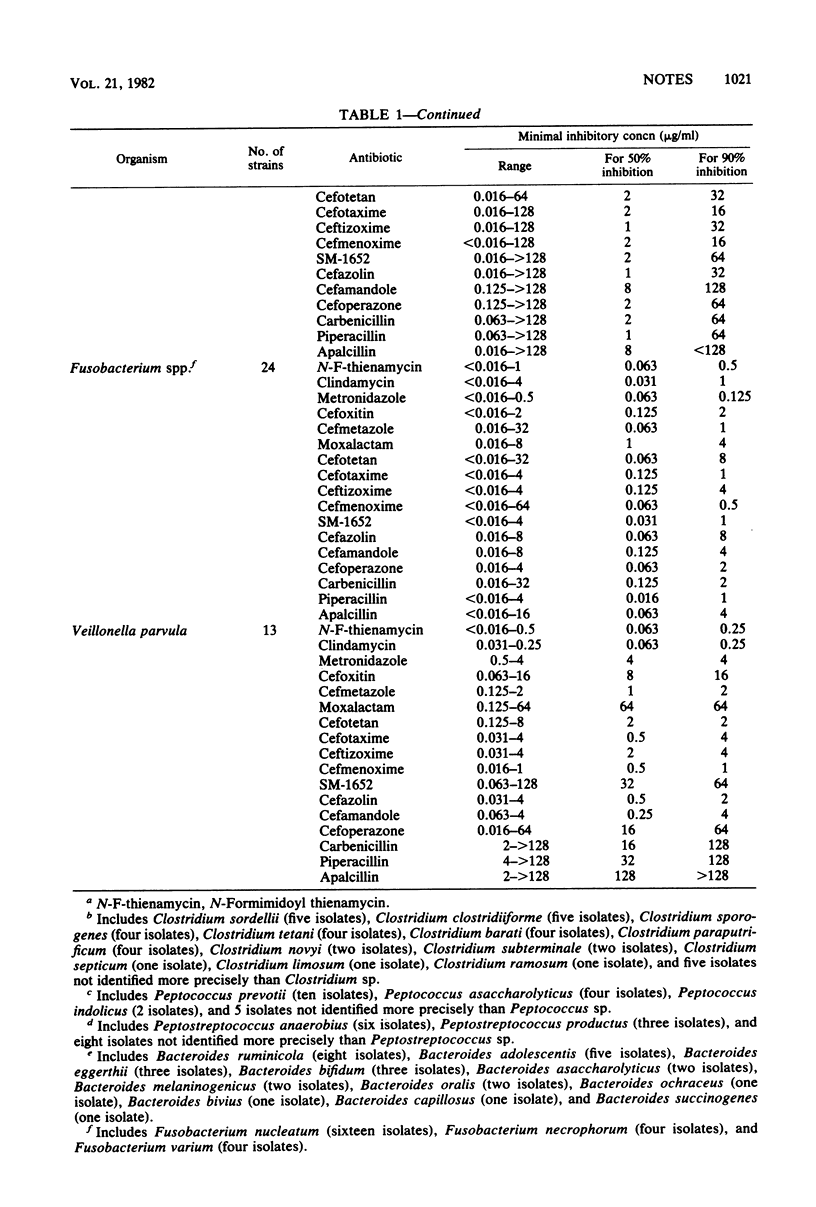
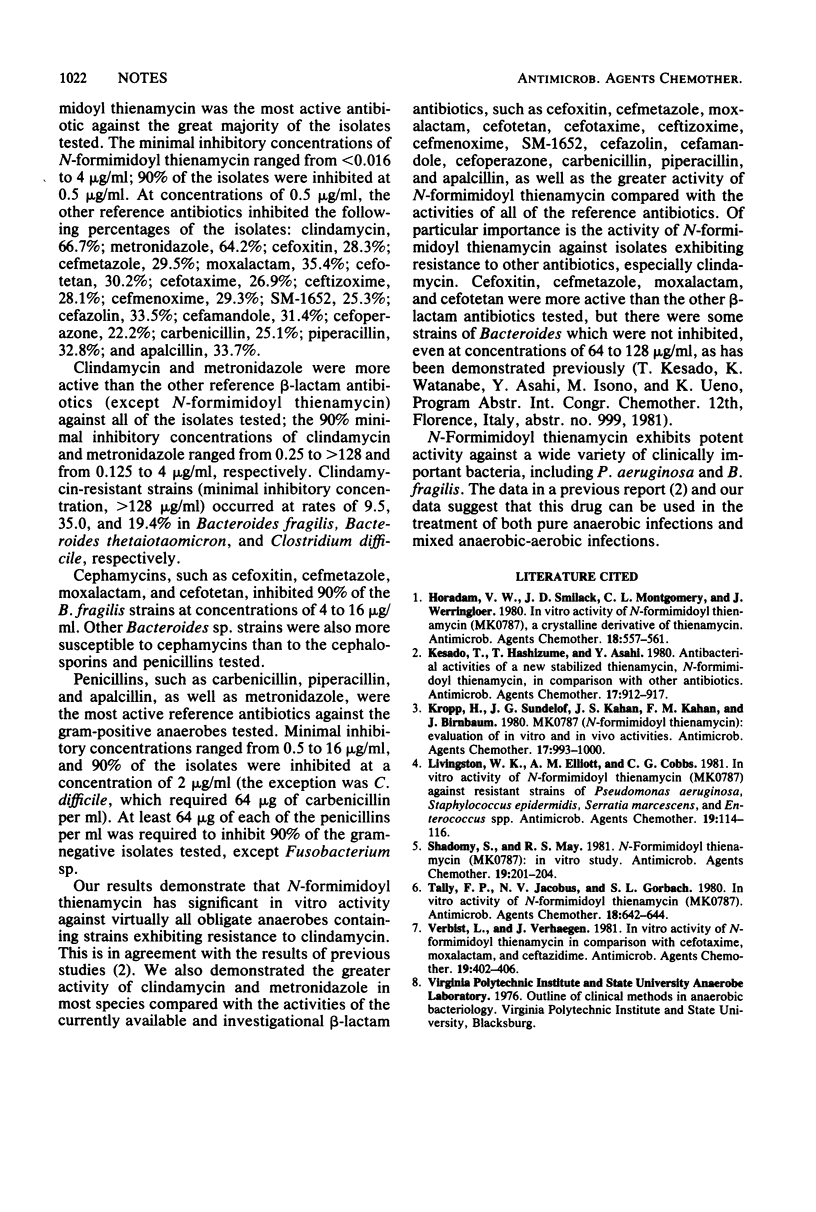
Selected References
These references are in PubMed. This may not be the complete list of references from this article.
- Horadam V. W., Smilack J. D., Montgomery C. L., Werringloer J. In vitro activity of N-formimidoyl thienamycin (MK0787), a crystalline derivative of thienamycin. Antimicrob Agents Chemother. 1980 Oct;18(4):557–561. doi: 10.1128/aac.18.4.557. [DOI] [PMC free article] [PubMed] [Google Scholar]
- Kesado T., Hashizume T., Asahi Y. Antibacterial activities of a new stabilized thienamycin, N-formimidoyl thienamycin, in comparison with other antibiotics. Antimicrob Agents Chemother. 1980 Jun;17(6):912–917. doi: 10.1128/aac.17.6.912. [DOI] [PMC free article] [PubMed] [Google Scholar]
- Kropp H., Sundelof J. G., Kahan J. S., Kahan F. M., Birnbaum J. MK0787 (N-formimidoyl thienamycin): evaluation of in vitro and in vivo activities. Antimicrob Agents Chemother. 1980 Jun;17(6):993–1000. doi: 10.1128/aac.17.6.993. [DOI] [PMC free article] [PubMed] [Google Scholar]
- Livingston W. K., Elliott A. M., Cobbs C. G. In vitro activity of N-formimidoyl thienamycin (MK0787) against resistant strains of Pseudomonas aeruginosa, Staphylococcus epidermidis, Serratia marcescens, and Enterococcus spp. Antimicrob Agents Chemother. 1981 Jan;19(1):114–116. doi: 10.1128/aac.19.1.114. [DOI] [PMC free article] [PubMed] [Google Scholar]
- Shadomy S., May R. S. N-formimidoyl thienamycin (MK0787): in vitro study. Antimicrob Agents Chemother. 1981 Jan;19(1):201–204. doi: 10.1128/aac.19.1.201. [DOI] [PMC free article] [PubMed] [Google Scholar]
- Tally F. P., Jacobus N. V., Gorbach S. L. In vitro activity of N-formimidoyl thienamycin (MK0787). Antimicrob Agents Chemother. 1980 Oct;18(4):642–644. doi: 10.1128/aac.18.4.642. [DOI] [PMC free article] [PubMed] [Google Scholar]
- Verbist L., Verhaegen J. In vitro activity of N-formimidoyl thienamycin in comparison with cefotaxime, moxalactam, and ceftazidime. Antimicrob Agents Chemother. 1981 Mar;19(3):402–406. doi: 10.1128/aac.19.3.402. [DOI] [PMC free article] [PubMed] [Google Scholar]


